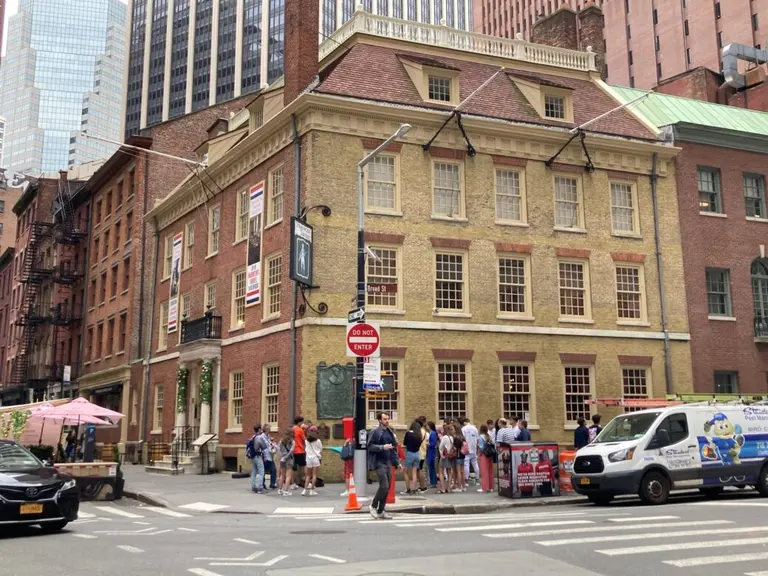Frank Lloyd Wright Designs Destined for NYC But Never Built

Many wonder why such a prolific and famous architect as Frank Lloyd Wright didn’t have more buildings in New York City. It’s safe to say he wasn’t a huge fan of urban density, but how could one possibly create something as iconic as the Guggenheim’s spirals without getting any other work in the city? As we showed in a previous post, two Wright designs have actually been demolished. Now, we will look at the two buildings Wright intended for the New York area which were never fully realized—at least, not in Manhattan.
 Image © MoMA/Frank Lloyd Wright Foundation
Image © MoMA/Frank Lloyd Wright Foundation
St. Mark’s-in-the-Bouwerie Towers
Frank Lloyd Wright’s 1929 design for a set of skyscrapers surrounding St. Mark’s Church-in-the-Bowery tries its very best to make room for nature within the city environment. Wright hated the way that skyscrapers block the sun and create corridors of darkness, so he left breathing room between each building with the greenery of a park in-between. This, plus several other nature-inspired elements, made this a typically Usonian design, creating something distinctly new, natural, and American.
 Image © MoMA/Frank Lloyd Wright Foundation
Image © MoMA/Frank Lloyd Wright Foundation
The tower operates along a spiral extending out of a “tap-root” in the middle, a design inspired by trees. The building’s core bears the load of the floors extending out from it, a basic design concept which has had its problems in the past. The design was close enough to being realized to find some press coverage, touted as New York’s first all-glass building. This really meant that the building eschewed steel support for a concrete core, a proposal not quite as knee-shaking as the idea of an “all-glass skyscraper.”
 A version of the tower was erected in Oklahoma. Images by Destination 360
A version of the tower was erected in Oklahoma. Images by Destination 360
A very similar building was eventually built in Bartlesville, Oklahoma, as an office building for H.C. Price Company, a chemicals business. The building is Wright’s only true skyscraper, despite decades of proposed office tower designs for sites in New York, Chicago, and San Francisco.
***
 Image © The Pierce-Arrow Museum
Image © The Pierce-Arrow Museum
The Wright Gas Station
And because Wright’s idea of a city was a sprawling, open, and low-density, cars would be an even more important part of daily life. This gas station would serve a grand new purpose in his idealized city, in which gas stations would be important centers of commerce. The station was never really put into practice, but the Pierce Arrow Museum of Transportation in Buffalo recently completed their own “replica” (or should it be “original?”).
Above the filling station you may see the red LED lighting spelling out “Tydol.” The museum claims that Wright designed the gas station with Tydol Oil Company in mind as the eventual company to run the stations. The name Tydol disappeared completely from the gasoline world by 1956, but they had a good run in Wright’s lifetime: Wright first proposed this station design of his in 1927.
 Image © The Pierce-Arrow Museum
Image © The Pierce-Arrow Museum
The orange-on-pink coloring is a shock at first, until you realize that Wright was planning for the copper roofs to turn green, matching the rest of the design much more naturally. This use of copper won the museum-bound filling station a 2014 Copper in Architecture award, whose panel complimented the vast amount of copper details in the work: A copper roof, copper “totems” on the roof, the copper roof edges and undersides, seamless copper ridges, copper hanging gravity pumps, copper bands along the gas tanks to show how much is left, all flashing light in every direction from the natural light coming through the museum’s glass walls.
Despite occasional plans to bring the station to life in Buffalo, or as part of a more ambitious plan for New York or any other great American city, it went unbuilt until the design was too dated to serve as more than a museum piece. But given the context of its time, and the broad vision it contains for the American city, the Frank Lloyd Wright filling station is still an excellent piece of what could and should have been functional American architecture.


































